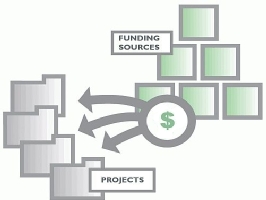image source:http://www.northwestern.edu/fm/images/old/project-budgeting.jpg
Although developing project budgets is a relatively challenging task (Portny, Mantel, Meredith, Shafer, Sutton, and Kramer, p. 119, 2008) it is a necessary part of the process and having access to the right tools and resources can be challenging. In my search for resources, I came across a few but I will briefly describe to of them.
The first resource I found was on an ID page called The Learning & Teaching Office Blog which can be accessed by clicking on the name or following this link:- https://lto.blog.ryerson.ca/2014/05/09/resources-in-project-management-instructional-design-projects/. This site seems to provide a comprehensive outlook on resources for scheduling and budgeting in an article titled, Project Management: Instructional Design Projects. The writer provides a range of resources including articles, software that is paid for and alternatives for those who do not have the luxury of spending money on project management software. I now have a point where I can start exploring actual tools from toward completing my project and if cost is a problem I even have options to explore.
The second resource is from a project management consulting setup called Striking Project Management (http://strikingprojectmanagement.com/project-estimation/). They give techniques, which can be employed for estimating projects of varied complexities. I was pleasantly surprised to see that there were other techniques other than the bottom-up and top-down approach. This resource helps me to extend what I already know and not take an entrenched position as to having to choose one technique out of two.
There is a ton of resources available and with experience; I just might mind one even better than these two.
References:
Portny, S. E., Mantel, S. J., Meredith, J. R., Shafer, S. M., Sutton, M. M., & Kramer, B. E. (2008). Project management: Planning, scheduling, and controlling projects. Hoboken, NJ: John Wiley & Sons, Inc.



